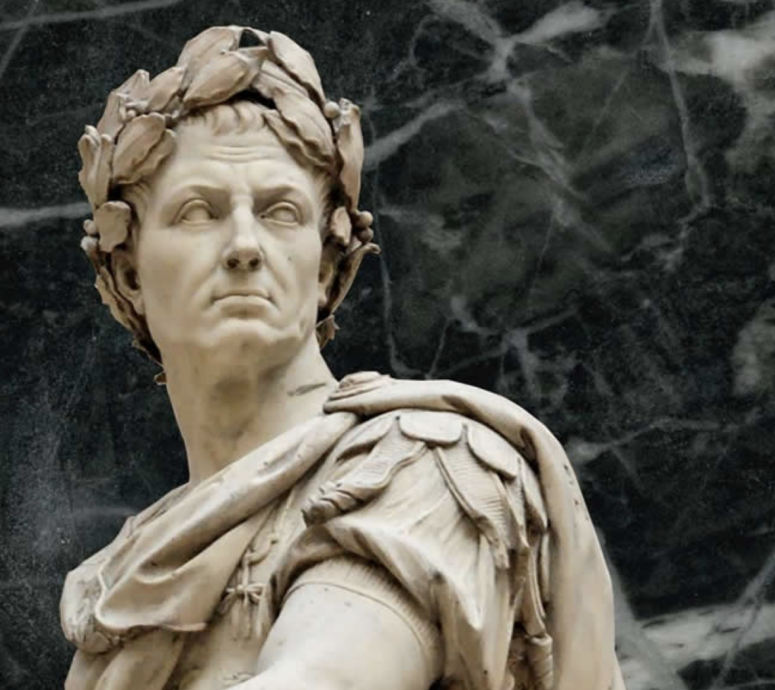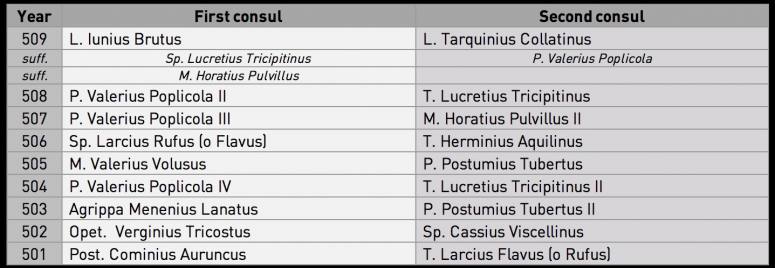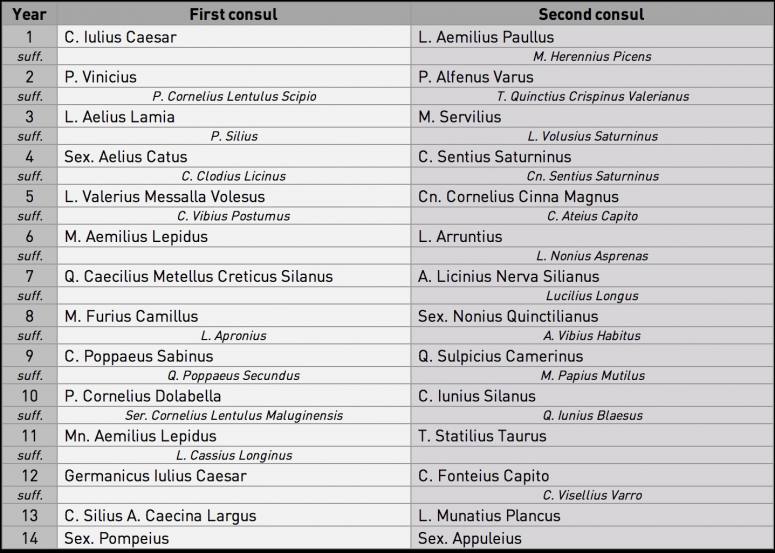Consuls
With the Republic, Rome replaced the leadership of the kings with a new system of government: the consulate was created.
Background
The figure of the consul was slowly formed after the fall of the monarchy. Initially, the rex sacrorum coexisted in the exclusively religious sphere and the magister populi, who took over political and military responsibilities.
The commoners, with almost no role in public affairs, were unaware of the rules by which they could be judged and normally the patricians applied the tradition according to their interests (mores maiorum). For this reason, one of the first plebeian claims was the organization of the Roman tradition in the form of laws. To do this, in 452 BC the Senate agreed to send a commission to Greece to inquire about the government of the Greek cities and replaced the magister populi with a college of ten people (decemviri legibus scribundis consulari empire) commissioned to draft within a year a normative set that would allow to regulate the relations between all the Roman citizens. The result was the Law of the XII Tables, the first structured legal body that, as basic norms of coexistence, was publicly exposed in the Forum in 451 BC.
The success of the decenviral formula led to repeating the scheme for 450 BC. The new decenvires were appointed with the task of approving that law, but after its approval, they refused to leave office and a revolt began that forced them to resign.
After the resignation (449 BC) a two-person magistracy was reestablished, renamed praetor maximus and praetor minor. From that moment, this praetorial college, preceding the consular, would alternate with the colleges of military tribunes with consular power (tribuni militari consulari potestate).
The tribuni militari consulari potestate first appeared in 444 BC as a patrician concession during the conflict that arose with the commoners, who claimed to have access to high positions in the government of Rome under the same conditions as the former (consular tribunes should not be confused with legionary officers of the Roman army). Given the patrician reluctance to open the doors of the consulate to the plebs, it was agreed to create this magistracy as a practical solution that allowed both plebeian claims to be satisfied and to keep the formal requirements established to reach the consulate unchanged, which would continue to be reserved in exclusive to patricians.
Consular tribunes, like consuls, were invested with imperium, which implies that they must have been elected by the comitia centuriata.
The decision to choose a collegium of consular tribunes or one of consuls was taken by senatus consultum, probably depending on the persons who should occupy the position.
It could also be due to the changing military and administrative needs of an ever-expanding Rome. During the decade of 440 BC, the creation of the consular tribunes could be framed in a reorganization of the military structures, from which the censorship also arose (responsible for carrying out the census that identified the number of men willing to provide the service of the arms) and questioning (responsible for the funds and supply of the army).
The number of consular tribunes was variable. Initially three were named; they became four for the first time in 426 BC, after the annexation of the city of Fidenas; from 405 BC the number increased to six, continuing thus (with some exceptions) until the suppression of the office by the Liciniae-Sextiae leges (367 BC) and the reestablishment of the consulate in 366 BC.
The Leges Liciniae-Sextiae, culminated the process of equalization of patricians and plebeians and allowed the progressive access of the latter to the magistracies.
The suppression of the six consular tribunes was compensated by the appointment of five magistrates with different functions: the highest hierarchy was entrusted to two consuls. Underneath, a praetor, in charge of dispensing justice in the city of Rome, and two curule aediles were appointed, who were in charge of all other administrative tasks within the city (organization of the games, control and supervision of the markets).
Profile
The consul was the supreme magistrate, with imperium, to whom all the powers that the king had had were attributed, although now on a collegiate and temporary basis. The consul directed the government of Rome and, in times of war, was the commander of the army. His military power was unlimited and they commanded two legions each.
Two consuls were named, who gave names to the year (eponyms). The substitutes were called suffecti. Their mandates were annual and each consul could veto the decisions of the other (intercessio). He wore the praetexta toga, wore the sella curulis and was preceded by twelve lictors (public order officers in charge of escorting high positions).
The consuls were chosen by the comitia centuriata and, as a result of the intercessio, they only adopted decisions by consensus: only the veto of the other consul and, later, that of the tribunes of the plebs limited their powers. Instead, the consuls could interfere in the decisions of the praetors, aediles and quaestors. Over time and for greater security, it was required that the decisions of the consuls be ratified by the Senate, which could thus control the treaties and, in general, participate in decisions that transcended the one-year mandate.
In the event of external danger or serious internal commotion, the Senate could dictate a senateconsult and authorize the consuls to appoint a dictator. The appointment, for a maximum period of six months, meant the meeting in a single person of the highest powers and the suspension of the exercise of the other ordinary magistrates.
The ides of March took office; beginning in 153 BC, they did so in the calends of January. When the term ended, they were bound by the law and, if applicable, held accountable for their decisions.
To be consul, it was required to have completed 40 years for patricians and 42 for commoners, although it was possible to hold the position more than once if at least ten years elapsed between appointments. The Lex Vibia annalis of 180 BC required, to gain access to the consulate, to go through the lower magistracies beforehand (cursus honorum) and to respect the time of inactivity established between each magistracy.
As the territory increased, some of the powers of the consuls had to be shared with provincial magistrates (proconsuls and propretores).







